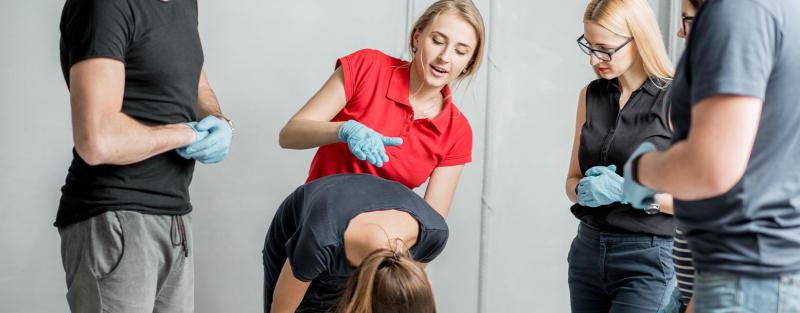Aims Paramedic Associate Degree Requirements
Explore the classes that will teach you the skills you need to become a paramedic. Study advanced concepts in cardiology, including EKG concepts, rhythms and diagnoses. Study advanced pharmacology, IV fluid therapy, and medical and trauma emergencies. Each classroom lecture segment coincides with a lab session designed to give you hands-on training in various emergency scenarios. General education requirements include public speaking, math, English composition, government and the sociology of diversity.
Clinical rotations give you well-rounded hands-on training in the following departments:
- Emergency room
- ICU
- Catheter lab
- Helicopter
- Labor and delivery
- Operating room
- Pediatric ER
- Psychiatric unit
After your clinicals, internships allow you to apply your knowledge and skills in the community.
Choose Your Paramedic Degree Program Pacing
Aims offers two paramedic associate degree program tracks:
- The traditional paramedic program track is for you if you’d like to maintain your employment during training. This program track takes three semesters to complete, with clinical rotations over winter break and a field internship completed during the summer.
- The accelerated paramedic program track is for you if you’d like to complete your paramedic degree program in two semesters. Classes start in the fall and meet all day every Thursday and Friday, with hospital and clinical rotations over winter break and an internship over the following spring semester.
Both online and in-class options are available for the classroom learning portion of the paramedic degree program.
If you’re a registered nurse or intermediate EMT, Aims also offers an advanced paramedic program track with accelerated and traditional pacing options.
- View the accelerated advanced paramedic program track for nurses and intermediate-to-advanced EMTs
- View the traditional advanced paramedic program track for nurses and intermediate-to-advanced EMTs
How to Apply to the Aims Paramedic Program
To apply to the paramedic program, you'll need to meet certain minimum requirements and fill out an application form. Visit this page for more information and to apply.
